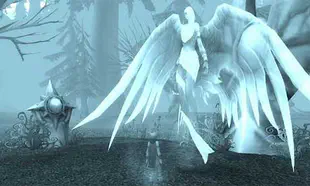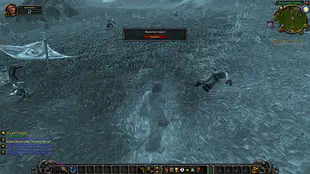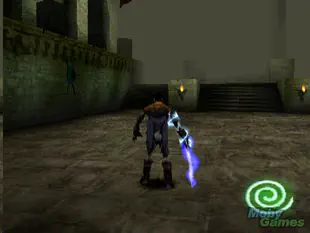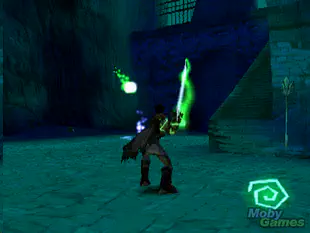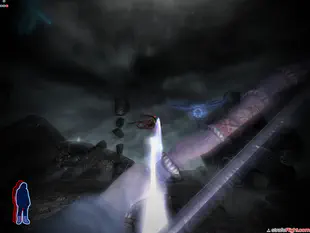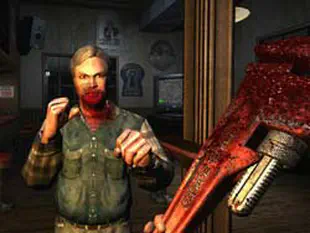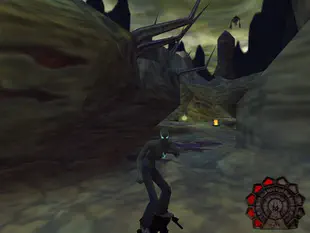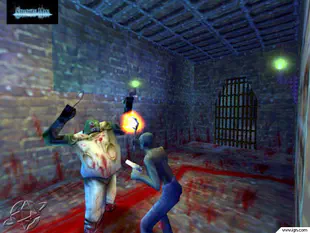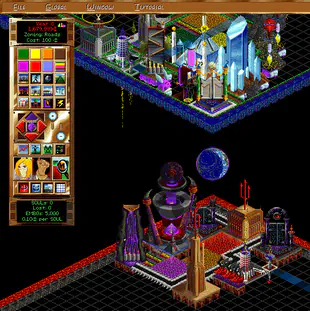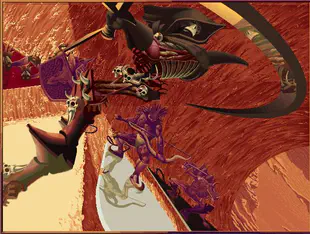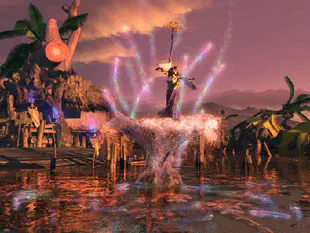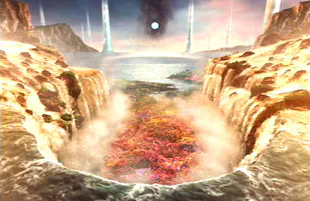Top 5 Weirdest Videogame Afterlives
Death is only the beginning.
Maybe it’s the Halloween festivities, the All Souls Day solemnity, or the fact that recently the Legend of Korra has been dealing with tussling spirits and weird dimensions. Whatever the reason, I feel like bringing up an old article I wrote for Game! Magazine back in 2010, about the way some videogames have portrayed their versions of life after death.
Granted, this list is almost three years old by now and many many new games have come out since then - some dealing with the topic in their own special way. Unfortunately for me, I haven’t been able to play much (gasp) anyway, so the titles I’ll bring up here are as relevant to me now as they were when this was first published. And hey, there were some pretty damn good games back then, so if anything, they’re worth remembering. Let’s get to it, shall we?
5. World of Warcraft #
So you’re walking, and you’re walking, and you’re walking, when bam, all of a sudden you get ganked. C’est la vie in World of Warcraft, but apparently, c’est la mort as well, because right after you die in this game, you’ll likely be walking again – as a spirit, going back to your corpse, to rise again. Known as a “corpse run,” it’s similar to how Blizzard’s Diablo II handled player death. The difference is that since you walk around as a spirit, you won’t have to worry much about being killed again on your way back to your body. As a ghost, the world loses all color, and other players and monsters cannot be seen, unless they too are ghosts. “Spirit Healers,” ethereal angels that revive dead spirits, can only be seen as a ghost. It takes a lot of the pressure off of living when pretty much everyone can be resurrected this way.
4. Tied for 4th place: Soul Reaver & Prey #
Although released seven years apart, Soul Reaver and Prey share similar concepts of death mechanics and in-game afterlives. In the former you play as resurrected vampire-wraith named Raziel, who was given a second chance at life/death by The Elder God. In the latter your character is Domasi “Tommy” Tawodi, a former soldier of the U.S. Army, who also happens to be of Native American descent – Cherokee, to be particular. Thanks to Raziel’s wraith-like existence, and Tommy’s highly spiritual ancestry, both these characters in their respective games can freely travel between the physical realm and spectral or spirit plane. This is necessary due to the fact that some things, such as puzzle-solving and travelling, are easier done as a ghost. Interesting to note is that for both games, recovery from death is done the same way; when killed, both Raziel and Tommy can collect energy from spirits in order to come back to life.
3. Shadow Man #
Whenever voodoo is involved, there’s always bound to be uncanny elements infused in every detail. Shadow Man was released less than a month before Soul Reaver (which may be the reason not many have heard of it), and it involves a copious amount of the practice. You play as Mike LeRoi, an African American English literature student who – through a chain of tragedies before the actual game starts – ends up becoming the eponymous hero. “Shadow Men” are a line of African voodoo warriors who are bestowed powers by the gods to protect their tribe from evil spirits who attempt to cross from “Deadside” – the final resting place of every deceased soul – into the living world, “Liveside.” The fact that shadows are dark and African men are also dark is purely coincidental, so stop laughing unless you’re racist. Mike’s job is to stop an invasion from Deadside, using an arsenal of earthly, voodoo, and infernal weapons.
2. Afterlife #
Released in 1996 to all of five people in the world, Afterlife by LucasArts is a god game that puts the player in the shoes of a deity known as “Demiurge,” whose job is to create a suitable afterlife for the souls of The Planet. With SimCity-like gameplay and mechanics, you have to manage both heaven and hell, preparing it for the EMBOs – Ethically Mature Biological Organisms – when they die. As soon as their SOULs – Stuff of Unending Life – travel to your afterlife, they will look for and reside in “fate structures” that suit the virtues or sins they practiced on The Planet. Your paycheck, Pennies From Heaven received from The Powers That Be, is affected by how well you manage the afterlife. Spend them wisely, because if you’re too deep in debt, the “Four Surfers of the Apocalypso” will be summoned to ride a wave of fire and destruction across heaven and hell, ending the game. Yeah, it’s that weird.
1. Final Fantasy X #
Like Deadside in Shadow Man, Final Fantasy X has its own final destination for those who have been knocked down to 0 HP and not subsequently Phoenix Downed. The Farplane is where the spirits of those who have accepted death go to rest; if a spirit has not come to terms with its demise, as in the case of tragic or untimely deaths, they will need to be guided to the Farplane by Summoners performing a ceremony known as “the Sending.” If these spirits remain unsent, they wander the world and grow envious, eventually hateful of the living. These angry spirits latch onto the phenomenal “pyreflies” and use the energy to assume twisted, malignant forms known as fiends. It’s like that famous Yoda quote involving fear, anger, hate and suffering, but scarier; these fiends could have been someone’s own loved ones. To make matters even more uncomfortable, apparently strong-willed spirits can exit the Farplane on their own volition, attract pyreflies with their powerful emotions, and possess hapless individuals. Suddenly, Yuna, Rikku and Lulu don’t seem like enough of an incentive to live in Spira.
